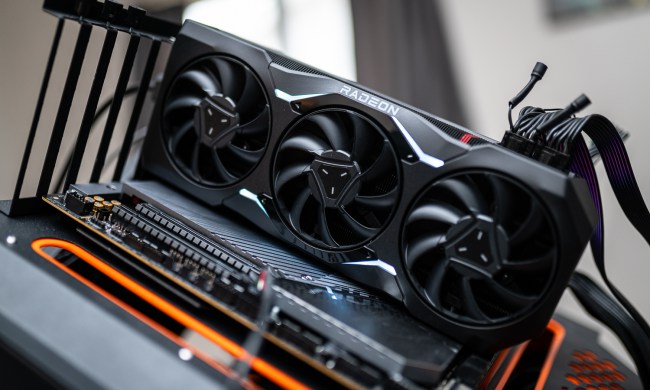
Lossless Scaling, a $7 Steam utility that promises increased performance on PC, just received a massive update. The new 2.9 version adds a mode that can triple your frame rate in games, all with a single mouse click.
I’ve written about Lossless Scaling previously, but this update is a big one. The utility gives you upscaling and frame generation for any game, and on any GPU. It includes a variety of different upscaling utilities like AMD’s FidelityFX Super Resolution 1 and Nvidia’s Image Scaling, but frame generation is where the app truly shines. The app includes its own AI frame generation algorithm that inserts new frames between those already rendered.
The frame generation is similar to something like Nvidia’s DLSS 3 or AMD’s FSR 3, but it has a key difference — it works with any game. Developers don’t need to support Lossless Scaling for you to use it, and you can use the feature with virtually any graphics card. The utility received frame generation earlier this year, but the latest update not only makes frame generation more efficient, but also allows you to to triple your frame rate.

The app now includes an X2 and X3 mode for frame generation, noting if it’s doubling or tripling your frame rate. The developer recommends a base frame rate of at least 30 frames per second (fps) for 1080p and 40 fps for 1440p. I’ve been using the utility for about a month, and I think 40 fps is the best target to shoot for if you’re using the X3 mode and 60 fps is best if you’re using the X2 mode. Using Lossless Scaling puts some additional strain on your GPU, but the developer says this update is 20% faster than previous versions.
Despite tripling your frame rate, the new mode doesn’t increase latency. Latency is a big point of contention with frame generation techniques, but you’re getting the same latency regardless of if you’re using the X2 or X3 mode. The latency hit comes from your base frame rate, which doesn’t change regardless of how many frames you’re generating in-between.
I’ve played around with the X3 mode in a couple of games already, including Lords of the Fallen and Destiny 2, and it works wonderfully. The important thing is to cap your frame rate. For instance, in Destiny 2, I can achieve about 90 fps with my PC. I intentionally cap my frame rate to 45 fps, however. This feeds Lossless Scaling with a consistent stream of frames, and after the frame generation, I’m easily maxing out my monitor’s refresh rate at a stable 138 fps.
Although Lossless Scaling doesn’t produce the same quality as DLSS 3 or FSR 3, it’s a great tool to have for games like Destiny 2 where you don’t normally have access to frame generation. It also doesn’t modify any game files, so you’re safe to use it in titles with anti-cheat software without risking a ban




